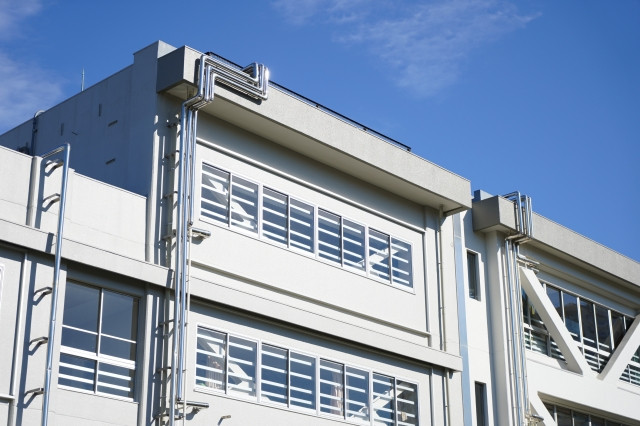Japan boasts its sound secondary education. Acquiring substantial funding from the government, high school students are definitely prepared aptly for either future academic endeavors or jump starting their careers. And as Japan becomes more global, Japanese high schools attract international student enrollment from across the globe.
Table of Contents
- Japan’s secondary education
- Opportunities for international students
- School Life and Expectations
- Summary
Japan’s secondary education
The Japanese government and private academic institutions show their sincerity in nurturing their future generation by providing and maintaining competitive academic facilities and formulating well-rounded high school curriculums. The implemented curriculum of Japanese secondary education is extensive. It aims to improve not just the academic aspect of the students; it also highlights the students’ talent and potential in sports, arts, music, and home economics. Throughout high school, the students are expected to decide their career path through self-exploration and to accumulate the foundational skills and ethics of the career of their choice.
The junior and senior levels of high schools in Japan
The secondary education of Japan is also divided into the lower secondary and upper secondary levels, like the junior high and senior high of the U.S. schools. In the lower secondary level, students are taught the general academic and technical subjects. After graduating, students can continue to the more specialized curriculum of the higher secondary.
After the three years of middle school, students will choose whether to enter the upper secondary level or not. In fact, 95 percent of the junior high graduates enroll in high school. One must pass the entrance exams of their preferred high schools before they can enroll. The prestige of one's high school reflects the individual's ability and future prospects. Hence, high schools have a hierarchical status. Since these prestigious schools have limited slots, there is fierce competition to be admitted.
Students also decide in the process of choosing schools if they will study full-time, part-time, or take what are known as online correspondence classes where you submit coursework and take tests online. Full-time takes three years to graduate (grade 10 to grade 12); on the other hand, part-time and online tend to take longer.
※ Stanford Program on International and Cross-Cultural Education, "Japanese Education"
High school students attend either academic or vocational schools. The first year of studying is essentially the same in both vocational and academic high schools. For the remaining two years, academic students can further specialize in either literature or science whereas vocational students will begin to learn their specialized skills along with their studies.
Writer's Pick
Opportunities for international students

Several high schools in Japan accommodate students of different nationalities who will reach the schools' standards. There are two types of international high school students, the returnees and the foreign students. Returnees are children of Japanese nationals (who may have another parent of a different nationality) who are or were living outside Japan while foreign students are foreign nationalities that are staying or will be staying in Japan.
If you are fluent in Japanese and would have no problem adjusting to the coursework and classes solely in Japanese, you can apply to a regular Japanese high school as long as they accept applications from overseas. One option to ensure that your experience overseas is appreciated and expanded towards your future is to apply to a designated Super Global High School. These schools aim to “foster globalized leaders who will be able to play active roles on the international stage through education at high schools that contribute to this mission,” according to their website. Please check the schools, found throughout Japan, on the list at the website to see if they accept foreign applicants.
※Super Global High School, “Outline of Super Global High School Program”
However, if you are not fluent in Japanese, one option is to go to an international high school. While they can be found throughout the country, we will be focusing on the ones in Tokyo as there are arguably a larger amount of options compared to other places in Japan.
The Tokyo Metropolitan Government operates ten public high schools called Tokyo Global 10 that accept international students living in Tokyo. The school holds the status for 3 years before being reassessed. Student applicants should be registered as a foreign national living with parents in Tokyo and should be entering the school within three years upon arrival in the country should they be accepted. Moreover, the aspiring student should have attended school for at least nine years prior. Since local students devoted nine years of studying through grade 9, the aspiring student needs to also have academic attainment equivalent to the grade 9 standard of the Japanese education system or higher. Many of these schools will also teach subjects in the Japanese language, so foreign students may need to have decent to excellent Japanese language proficiency. For those that do not, looking for schools that have an International Baccalaureate program or an equivalent in an English-language program.
※ Tokyo Metropolitan Board of Education, "Tokyo Global 10"
Aside from these public schools in Tokyo, they have private school counterparts. These schools have similar standards as the public schools however some of these private schools with some additional requirements and leeways.
Public and private schools accommodating international students in Tokyo
Some public schools in Tokyo that accommodate international students as currently in the Tokyo Global 10 are:
Even though studying in private schools is more expensive, they often have great scholarships as well as reputations in connecting the students to their futures. Here are some of them:
The international students that are enrolled in these schools will enjoy the same privileges as the local students. Please note that the above schools may have quite limited slots for foreign applicants and are thus competitive to enter.
Exchange programs
Suppose you are not eligible to enter the schools above. In that case, there are still exchange programs for you, such as AFS Intercultural Programs and Study Abroad in Japan by Youth for Understanding offered to American high school students. These programs are language and culture immersion in Tokyo that last for three to twelve months. Students will live with their host homes while they are attending their chosen high schools.
Also check out the Japan Foundation for Intercultural Exchange for a similar program.
Japan Discovery Service of Travel for Teens, on the other hand, is an outdoor learning experience offered by Travel for Teens. It is two weeks to four weeks of learning and volunteering in Japan while experiencing the culture and doing a cultural exchange at a high school. You can experience Japanese cooking, travel to heritage sites, practice martial arts, or hike. Students of all nationalities can take up this program.
These programs focus on learning the Japanese language and culture and building more personal connections with Japanese people.
School Life and Expectations

Language proficiency
Japanese high schools require high language proficiency, unless you are specifically enrolled in an English program. Enrollees must learn 1,945 kanji characters (joyo kanji) or the requirement for basic Japanese literacy before they can enter any high schools. If you are an aspiring foreign high school student, you should consider studying the joyo kanji.
Outside class hours
The extensive high school curriculum in Japan is demanding for the students. With the addition of fierce competition for admission exams for high schools and universities, the students need to study outside class hours and often enroll in preparatory cram schools or yobiko or juku. There are two main types of juku: one is naraigoto which are essentially lessons for hobbies and skills such as sports and instruments, and the other one is gakushu which are private after school classes, either offered one-on-one or in group lessons.
Clubs and other extracurricular activities
Students are also encouraged to participate in extracurricular activities such as sports, clubs, assemblies, ceremonies, plays, musical events, and field trips which are huge parts of the memorable moments of high school. In fact, students often join 部活 (bukatsu) - cultural, academic, or sports clubs that operate after school hours. Some students choose schools that have strong bukatsu based on which club they were in during junior high school as some of them are nationally ranked in competitions.
Summary

Japan invested in its future by providing their students with an excellent secondary education system. Equipped with comprehensive educational attainment, these students would have promising futures. With the opportunities given for foreign students, anyone could start a new life in the land of the rising sun. Most foreign students come to Japan in university, but if you’re interested, take your chance and be a part of the Japanese high school educational system!



































